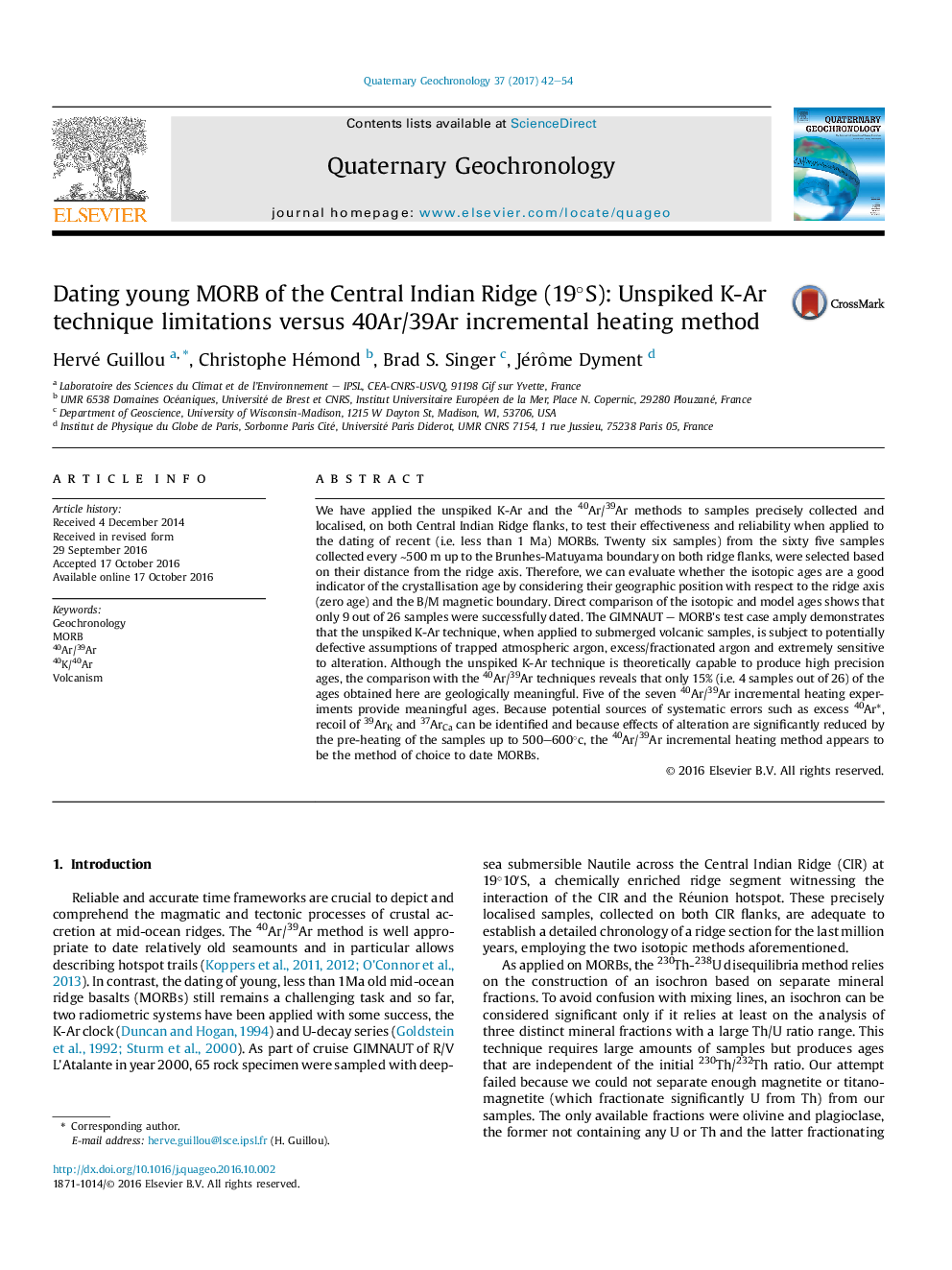| Article ID | Journal | Published Year | Pages | File Type |
|---|---|---|---|---|
| 6442458 | Quaternary Geochronology | 2017 | 13 Pages |
Abstract
We have applied the unspiked K-Ar and the 40Ar/39Ar methods to samples precisely collected and localised, on both Central Indian Ridge flanks, to test their effectiveness and reliability when applied to the dating of recent (i.e. less than 1 Ma) MORBs. Twenty six samples) from the sixty five samples collected every â¼500 m up to the Brunhes-Matuyama boundary on both ridge flanks, were selected based on their distance from the ridge axis. Therefore, we can evaluate whether the isotopic ages are a good indicator of the crystallisation age by considering their geographic position with respect to the ridge axis (zero age) and the B/M magnetic boundary. Direct comparison of the isotopic and model ages shows that only 9 out of 26 samples were successfully dated. The GIMNAUT - MORB's test case amply demonstrates that the unspiked K-Ar technique, when applied to submerged volcanic samples, is subject to potentially defective assumptions of trapped atmospheric argon, excess/fractionated argon and extremely sensitive to alteration. Although the unspiked K-Ar technique is theoretically capable to produce high precision ages, the comparison with the 40Ar/39Ar techniques reveals that only 15% (i.e. 4 samples out of 26) of the ages obtained here are geologically meaningful. Five of the seven 40Ar/39Ar incremental heating experiments provide meaningful ages. Because potential sources of systematic errors such as excess 40Ar*, recoil of 39ArK and 37ArCa can be identified and because effects of alteration are significantly reduced by the pre-heating of the samples up to 500-600°c, the 40Ar/39Ar incremental heating method appears to be the method of choice to date MORBs.
Related Topics
Physical Sciences and Engineering
Earth and Planetary Sciences
Geochemistry and Petrology
Authors
Hervé Guillou, Christophe Hémond, Brad S. Singer, Jérôme Dyment,
